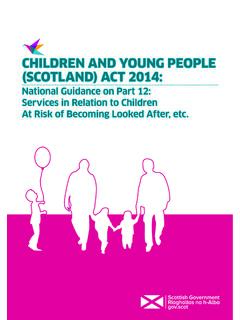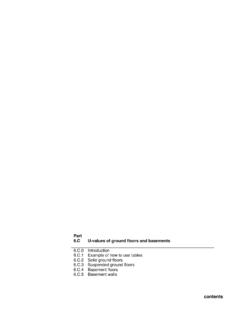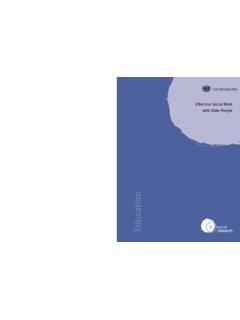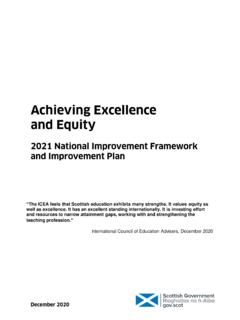Transcription of RECOMMENDED MODEL TENANCY AGREEMENT
1 SCOTTISH GOVERNMENT MODEL PRIVATE RESIDENTIAL TENANCY AGREEMENT FOR THE PRIVATE RENTED SECTOR ** This version of the AGREEMENT is in place while the Cost of Living (Tenant Protection) ( scotland ) Act 2022 is in force. The Act introduces emergency measures during the cost of living crisis in relation to Section 10 Rent Increases and Section 24 Ending the TENANCY . These measures are temporary and are aimed at helping tenants during this emergency situation. This TENANCY AGREEMENT reflects those changes. ** April 2023 The private residential TENANCY : know your rights Your TENANCY AGREEMENT Your TENANCY is open-ended, which means it doesn t have a fixed length or a set date it will end.
2 Your landlord cannot include an expected end date or minimum period in your TENANCY AGREEMENT . If you are a joint tenant, all tenants are responsible for the rent, together and separately. This will apply for as long as the TENANCY continues. To end a joint TENANCY , all the joint tenants must agree to end it and give the landlord written notice that they want to leave. (You can transfer your interest in the TENANCY to someone else, if you have your landlord s permission.) Your deposit and rent Your landlord can only increase your rent once in a 12-month period, and must give you at least three months notice that they are going to do this.
3 If you think an increase is unreasonable, you can ask a rent officer from Rent Service scotland to make a decision on whether it is fair. It is against the law for a landlord or letting agent to charge a fee or premium, or enter into a loan arrangement with you, as a condition of granting, renewing or continuing your TENANCY . They can only charge you rent and a refundable deposit, and the deposit must not be more than two months rent. If you have paid a landlord a deposit, they must pay it into an approved TENANCY deposit scheme, and give you further information about this within 30 working days of the start of your TENANCY .
4 This information should include, for example, the amount paid and the date it was paid, the address of the property, confirmation that the landlord is registered, and contact details for the scheme. If your landlord has not paid your deposit into the scheme within this 30-day timescale, you can take them to the First-tier Tribunal for scotland (Housing and Property Chamber), where they could be told to pay you up to three times the value of the deposit. Repairs You can apply to the First-tier Tribunal for scotland (Housing and Property Chamber) if your home doesn't reach a minimum standard of repair (known as the repairing standard).
5 Ending a TENANCY Your landlord cannot end your TENANCY without good reason. They can only end it by giving you notice to leave for one or more of 18 reasons (grounds). If your landlord asks you to leave, they must give you: 28 days notice (if you have lived in the property for less than six months or the landlord is using one of the six behaviour grounds); or 84 days notice (if you have lived in the property for more than six months and the landlord is not using the behaviour grounds). If you want to leave, you must give your landlord 28 days notice in writing. In your notice you will need to state the day you want the TENANCY to end (this is normally the day after the notice period has ended).
6 If you disagree with the reason given in the notice to leave given to you by your landlord, you do not need to leave your property until such times as your landlord has obtained an eviction order from the First-tier Tribunal (Housing and Property Chamber). If you think that your TENANCY was ended unlawfully (for example, the landlord served you with a notice to leave on the grounds that they intended to sell the property, but then they let it to another tenant), you can apply to the First-tier Tribunal for scotland (Housing and Property Chamber) The Tribunal can award you up to six months' rent.
7 For more information on any of these rights, please see the relevant section of the following TENANCY AGREEMENT . Contents SECTION 1: HOW TO USE THE MODEL .. 2 SECTION 2: GLOSSARY OF TERMS & 3 SECTION 3: MODEL PRIVATE RESIDENTIAL TENANCY 5 1. TENANT .. 5 2. LETTING 6 3. LANDLORD .. 6 4. 7 5. DETAILS OF THE LET PROPERTY .. 8 6. START DATE OF THE TENANCY .. 9 7. OCCUPATION AND USE OF THE LET PROPERTY .. 9 8. RENT .. 9 9. RENT RECEIPTS .. 9 10. RENT INCREASES ..10 11. DEPOSIT ..10 12. SUBLETTING AND 13. NOTIFICATION ABOUT OTHER RESIDENTS ..12 14. OVERCROWDING ..12 15. INSURANCE ..12 16.
8 17. REASONABLE CARE ..13 18. THE REPAIRING STANDARD etc. AND OTHER INFORMATION ..13 THE REPAIRING STANDARD ..13 REPAIR TIMETABLE ..16 PAYMENT FOR REPAIRS ..16 INFORMATION ..16 19. 20. ACCESS FOR REPAIRS, INSPECTIONS AND VALUATIONS ..16 21. RESPECT FOR OTHERS ..17 22. EQUALITY REQUIREMENTS: ..18 23. DATA PROTECTION ..18 24. ENDING THE 25. CONTENTS AND CONDITION ..22 26. LOCAL AUTHORITY TAXES/CHARGES ..22 27. UTILITIES ..22 28. ALTERATIONS ..23 29. COMMON PARTS ..23 30. PRIVATE GARDEN ..23 31. ROOF ..23 32. BINS AND RECYCLING ..23 33. 34. DANGEROUS SUBSTANCES including liquid petroleum 35. 36. SMOKING.
9 24 37. ADD ANY ADDITIONAL TENANCY TERMS HERE ..25 38. THE GUARANTOR ..26 39. Key:- Bold Text: Mandatory clauses - core rights and obligations Normal Text: discretionary clauses - a landlord can choose to include these if he or she wishes 2 SECTION 1: HOW TO USE THE MODEL A Landlord is under a duty to provide the written terms of a private residential TENANCY under section 10 of the Private Housing (Tenancies) ( scotland ) Act 2016 ( the Act ). This is the Scottish Government s MODEL Private Residential TENANCY AGREEMENT ( MODEL TENANCY AGREEMENT ) which may be used to fulfil this duty. This MODEL TENANCY AGREEMENT contains two categories of clause: The first category is the core rights and obligations, which includes, among other things, the statutory terms applicable to all private residential tenancies, the repairing standard and TENANCY deposits.
10 They are mandatory clauses which must feature in any AGREEMENT prepared using this MODEL . These terms are laid down in the Act, supporting secondary legislation and other relevant housing legislation and are indicated in bold typeface. These clauses should be read alongside the relevant legislation, as the legislation takes priority and may change from time to time. The second category is discretionary terms, which the Landlord may or may not wish to include in the written TENANCY AGREEMENT . These are in ordinary typeface. The MODEL TENANCY AGREEMENT contains a number of suggested terms which the Landlord may edit or remove as required.









